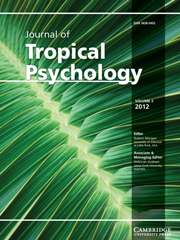Article contents
Why are so many Indigenous Women Homeless in Far North and North West Queensland, Australia? Service Providers’ Views of Causes
Published online by Cambridge University Press: 14 November 2014
Abstract
Homelessness is a complex problem affecting Australian Indigenous women disproportionately compared to the rest of the Australian population. Homelessness service providers in Cairns and Mount Isa, Australia, provided their perceptions as to why Indigenous women were presenting to homeless services. The key reasons cited by service providers were: domestic violence; alcohol and other drugs; and financial hardship. Other reasons included racist real estate agents; avoiding alcohol and family; overcrowding; literacy and numeracy skills; difficulty returning home and; not enough public housing. Potential solutions to help break this cycle of homelessness are explored. This research suggests that an important overall goal in reducing homelessness is to ensure that Indigenous women are safe at home in their own communities.
- Type
- Articles
- Information
- Copyright
- Copyright © The Author(s) 2014
References
- 1
- Cited by




